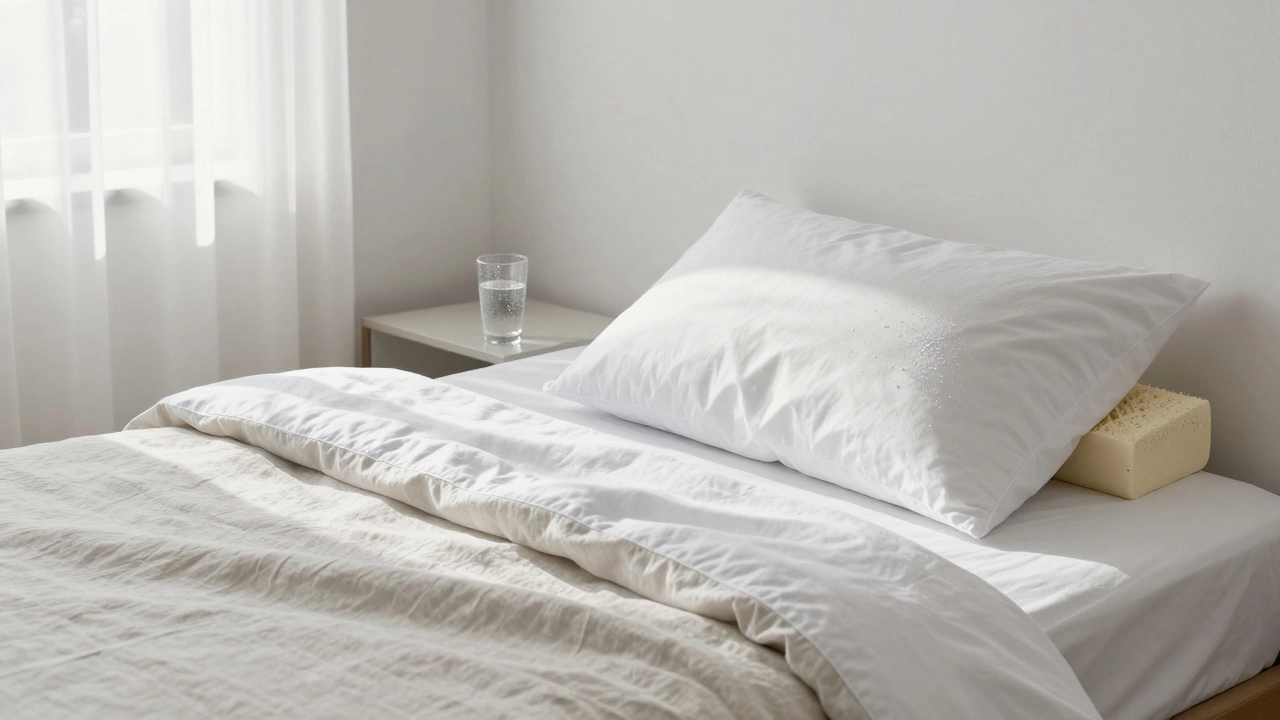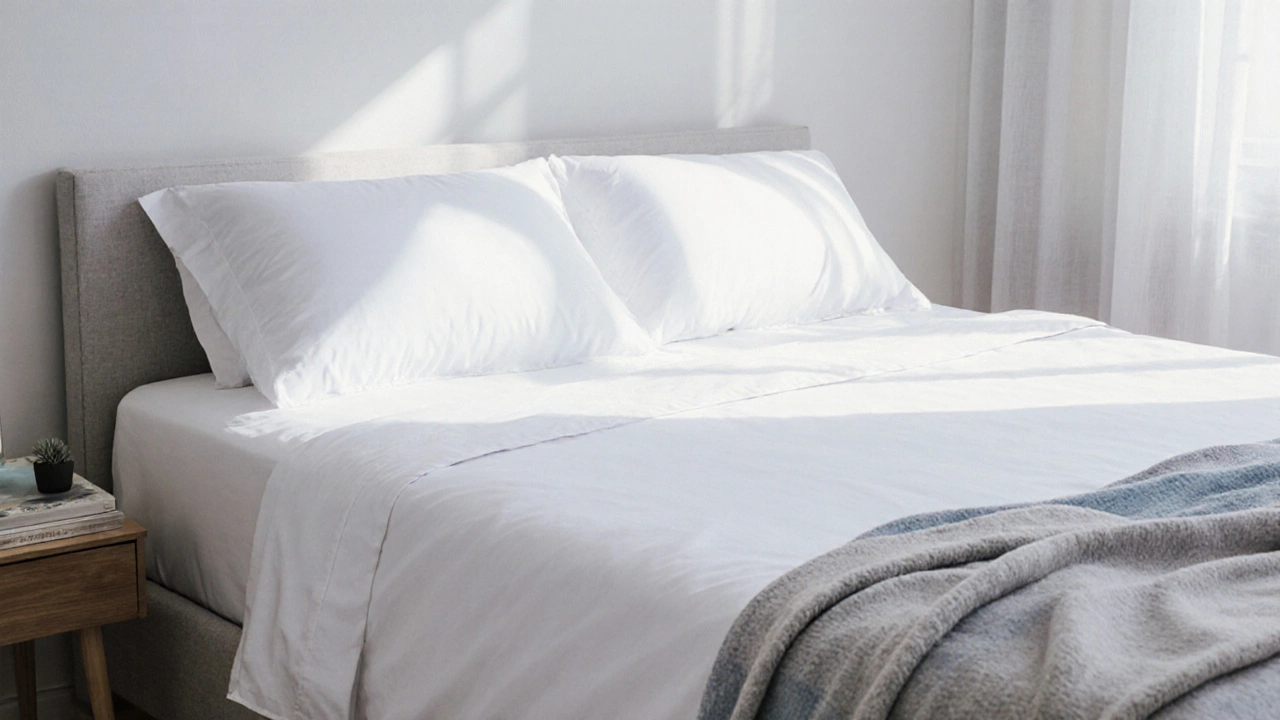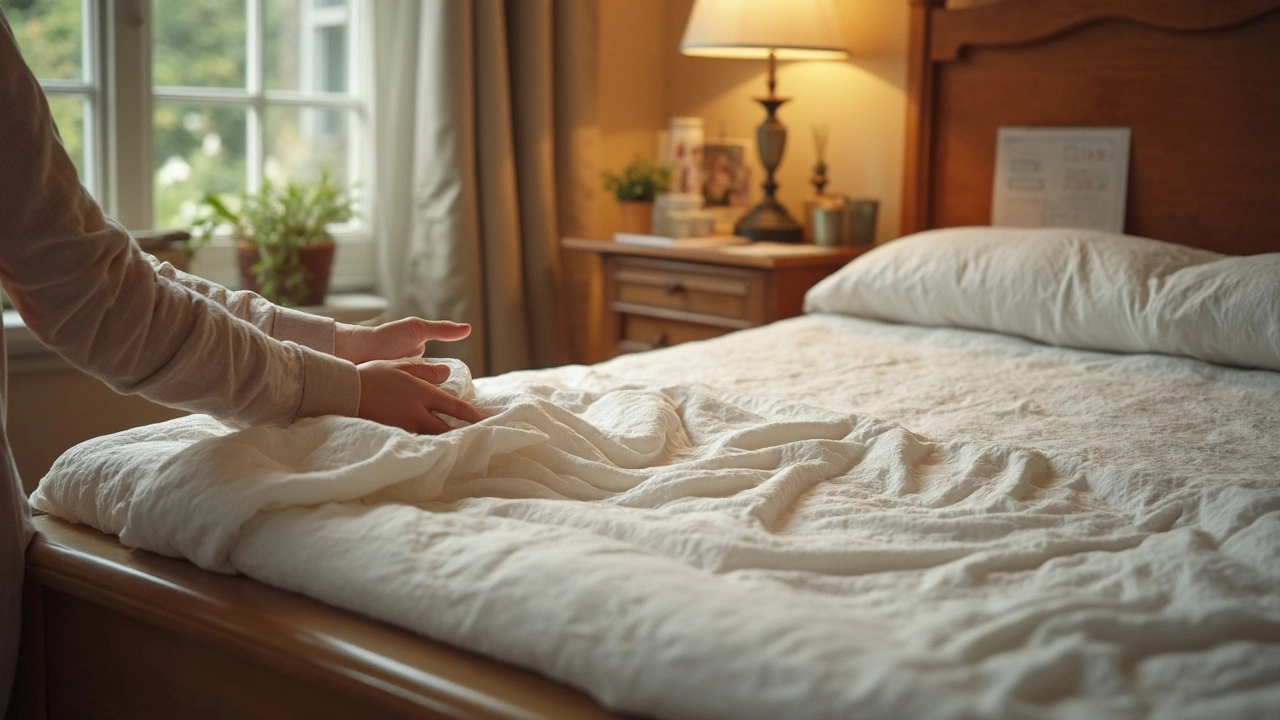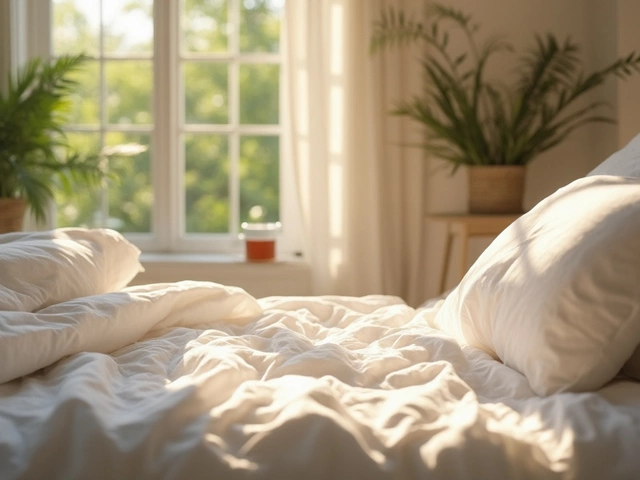Bedding Materials: What’s Best for Your Sleep?
Ever wonder why some sheets feel like a cloud while others feel scratchy? The secret is the material. Knowing the differences helps you choose bedding that stays comfy, lasts long and matches your bedroom vibe.
Common Fabric Types
Cotton is the go‑to for most people. It breathes well, gets softer with each wash and comes in many weaves. Percale gives a crisp, cool feel—great for hot sleepers. Sateen is smoother and a bit warmer, perfect for chilly nights.
Linen feels rough at first but softens dramatically over time. It’s super breathable and absorbs moisture, so it stays cool even in summer. The wrinkle‑prone look is part of its charm, giving a relaxed, lived‑in feel.
Microfiber (synthetic polyester) mimics the softness of natural fibers at a lower price. It’s lightweight, dries fast and resists stains. However, it can trap heat, so it’s best for cooler climates.
Bamboo blends natural feel with eco‑friendly credentials. It’s silky, hypoallergenic and moisture‑wicking. If you have sensitive skin, bamboo sheets are often a safe bet.
Silk is the luxury pick. It regulates temperature, feels ultra‑smooth and is gentle on hair and skin. The downside is high maintenance and cost, so it’s usually reserved for special occasions or master bedrooms.
How to Choose the Right Material
Start with your climate. If you live in a warm, humid area, go for breathable options like linen, percale cotton or bamboo. In colder places, sateen cotton or microfiber can lock in warmth.
Think about durability. Kids and pets can be rough on fabric. A high‑thread‑count cotton or a tight‑weave microfiber will hold up better than delicate silk.
Check the care label. Natural fibers often need gentle washing and lower heat drying. Synthetic blends tend to be machine‑friendly, which can save time.Consider allergies. If you’re prone to skin irritation, look for hypoallergenic tags such as bamboo or 100% organic cotton. Avoid fabrics treated with harsh chemicals.
Finally, match the feel to your personal preference. Some love the crisp snap of percale, while others can’t get enough of the plush glide of sateen. Feel the fabric in store or order a swatch if the site offers it.
Pairing the right material with a proper mattress protector can extend the life of your bedding. A breathable, waterproof protector works well under most fabrics and keeps spills from seeping through.
Remember, the best bedding is the one you actually enjoy sleeping on. Don’t get stuck on trends; focus on comfort, care routine and how the material reacts to your body and room temperature.
Now that you know the basics, you can shop with confidence. Whether you pick cotton percale for a cool night, linen for a relaxed summer look, or bamboo for a skin‑friendly upgrade, the right bedding material makes a huge difference in how rested you feel.

What Is the Best Bedding Choice for Better Sleep and Comfort?
The best bedding choice depends on your sleep style, climate, and skin sensitivity. Learn which materials-cotton, linen, bamboo-actually improve sleep quality and what to avoid.

Most Common Bedding Types Explained - What Every Sleeper Should Know
Discover why sheet sets are the most common bedding type, explore materials, climate impact, care tips, and how to choose the right combination for a great night's sleep.

Bedding: The Scientific Definition Explained Simply
Get straight to the point about what bedding scientifically means. This article breaks down the definition, why it matters for sleep, what materials are actually used, and how to pick the right set for your needs. Find out how science shapes everything from your sheets to your pillow. It's all about creating comfort with the right knowledge.
Categories
- Storage (27)
- Bathroom (18)
- Sofas (15)
- Curtains (15)
- Home Decor (12)
- Bedding (11)
- Kitchenware (11)
- Cushions (11)
- Mirrors (10)
- Rugs (9)
Popular Articles

Best Type of Bedding: What Actually Matters Most
May, 8 2025


